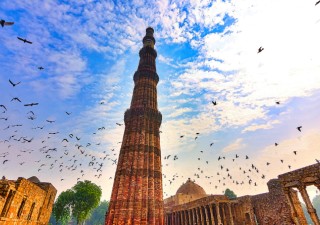Protection of Designs in India
28 September 2012

A consumer’s choice is determined not only by functional efficiency of products but also by innovative visual features which make the product catch one’s eye and impart a measure of esteem value to the product. Design registration provides a means to protect the intellectual property enshrined in these features of appearance and style.
In order to be eligible for protection, an industrial design must be new and original. It should not have been previously published anywhere in the world. The design should be distinct from known designs and reproducible through industrial means. The design should not be against the public order and morality.
The design must be applied to an article. A design drawn on a piece of paper cannot be registered unless the paper with the design or pattern is the article to be sold, such as wall paper. The design features should be fully visible at the time of purchase. For example, a screen saver or any graphics design, which would be visible on an electronic device screen, cannot be registered as these are not a feature of the article.
The article having novel and inventive functional features and also some features of shape that appeal to the eye may be patented and its design may be registered. In such a case, a provisional specification for a patent and application for registration of the design may be filed simultaneously, followed by the filing of the complete specification. Otherwise, the right which accrues first will have precedence over the other.
For a design to be novel, it should be distinguishable from what has gone before it by something new or original which is different from ordinary trade variants. A combination of known features may be considered novel if the appearance of the design as a whole is new and the combination is non-obvious. Mere workshop alterations which a skilled workman would introduce in an article are not considered novel and therefore not registrable.
Colour may be a feature of a design. Designs applied on textile or wall paper are not registered for any particular set of colours but for the pattern alone, independent of colours used. Therefore, it is advisable to represent the design in tones of grey to differentiate various colours of the design.
India follows the Locarno Classification system for classifying designs into 32 classes numbered 1 to 31 and 99, with most classes being further divided into sub-classes. Design applications must be filed in a particular class depending upon the use of the article.
An applicant in a member country of the Paris Convention can, within six months from the filing date, claim priority of the first application. If registration is granted to such a design, it will be deemed to have been registered from the date of the basic application. Though India is not a member of the Hague Agreement, priority can also be claimed within six months from an international design application.
An application for registration of a design can be filed by a designer or his assignee. The Patent Office examines the application and may issue a statement of objections; the Applicant must respond to the objections within a period of six months from the date of filing of the application, which is extendible by a maximum of three more months. Should the Applicant not respond to the objections within this period, the application is deemed to have been withdrawn. Thereafter, based on the response to the objections that have been filed by the Applicant, the Controller of Designs determines if the application should be refused, accepted or put up for a hearing. Should the application be rejected, the Applicant may appeal the order of the Controller of Designs at the High Court.
A design registration is valid for a period of 10 years from the date of registration. This is renewable for a period of five years. If the registered proprietor fails to renew the copyright in the design within the period of 10 years, it will cease to have effect. The design can be restored within one year from the date on which it ceased to have effect.
Any party aggrieved by the registration of the design may file an application for its cancellation before the Controller of Design, accompanied by a statement setting out the nature of the Applicant’s interest and the facts on the basis of which his application is based. An application for the cancellation of a registered design can be filed by any person interested on various grounds including that the design is not new or original or it is not a design under the Designs Act. Any aggrieved person can also initiate a proceeding before the Controller of Designs for rectification or insertion of any entry in the register of designs. After following the prescribed procedure, the Controller of Designs can make an order for making, expunging or amending such entry.
If anyone contravenes the copyright in a design he is liable to pay a sum not exceeding Rs25,000 (US$530) for each contravention up to a maximum of Rs50,000 per design. If the infringement is on a large scale, the registered proprietor may file a suit and the court may direct the infringing party to pay such damages as may be awarded and restrain the infringer by injunction.
Registration of designs offers an effective means of protecting intellectual property rights in the novel aesthetic features of products, thereby securing a competitive edge over the rivals and preventing them from nibbling into the registered proprietors’ market by offering similar-looking products.
Lall Lahiri & Salhotra
LLS House, Plot No. B-28,
Sector - 32, Institutional Area,
Gurgaon - 122001, National Capital
Region, India
T: +91 124 2382202, 2382203
F: +91 124 4036823, 2384898
E: Rahul@lls.in
W: www.lls.in






